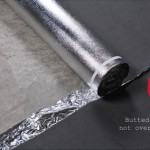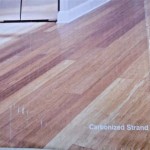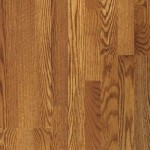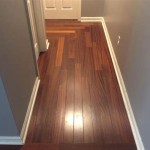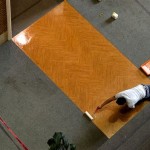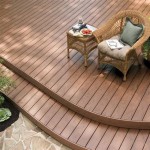Bellawood Hardwood Flooring Problems And Solutions
Bellawood hardwood flooring, a brand offered by Lumber Liquidators (now LL Flooring), has been a popular choice for homeowners seeking the aesthetic appeal and durability of real wood. However, like any flooring material, Bellawood hardwood is not without its potential issues. Understanding these problems, their causes, and available solutions is crucial for making informed decisions about purchase, installation, and maintenance, ensuring the longevity and beauty of the flooring.
This article delves into common problems associated with Bellawood hardwood flooring, ranging from manufacturing defects and installation errors to moisture-related issues and wear and tear. It will also provide practical solutions and preventative measures that can help homeowners address these challenges effectively.
Manufacturing Issues and Quality Control
One of the primary concerns surrounding Bellawood hardwood flooring, particularly in the past, has centered on manufacturing defects and inconsistent quality control. These issues can manifest in several ways, directly impacting the performance and appearance of the flooring after installation.
Dimensional inconsistencies, such as variations in the width and thickness of planks, can present significant challenges during installation. These variations can lead to uneven surfaces, visible gaps between planks, and difficulties in achieving a seamless and professional-looking floor. Addressing these inconsistencies typically requires careful selection of planks during installation, discarding those that deviate significantly from the norm. In severe cases, particularly if a large portion of the flooring batch exhibits dimensional issues, returning the product to the retailer may be necessary.
Defective milling can also cause problems. This includes issues such as tongue-and-groove imperfections, which can hinder proper interlocking of the planks. When the tongue-and-groove mechanism is faulty, planks may not fit together tightly, leading to instability, squeaking, and potential separation over time. Careful inspection of each plank before installation is critical to identify milling defects. Planks with noticeable imperfections should be rejected. Using specialized tools and techniques during installation, such as tapping blocks and pull bars, can sometimes mitigate minor milling issues, but significant defects necessitate replacing the affected planks.
Concerns have also been raised regarding the finish quality of Bellawood hardwood flooring. Problems can include uneven finish application, scratches, chips, and premature wear of the finish. These issues detract from the aesthetic appeal of the flooring and can compromise its protective qualities, making it more susceptible to damage from moisture and abrasion. Thorough inspection of the finish before installation is essential. Applying additional coats of high-quality polyurethane can provide enhanced protection and improve the overall appearance of the floor, especially if the factory finish appears thin or vulnerable. If the finish defects are widespread, pursuing a claim with the manufacturer or retailer may be warranted.
Addressing manufacturing-related issues often involves meticulous inspection, careful selection, and, in some cases, a return or exchange of the product. Proactive measures, such as purchasing from reputable retailers and thoroughly reviewing the manufacturer's warranty, can provide added protection against potential defects.
Moisture-Related Problems
Hardwood flooring, regardless of brand, is inherently susceptible to moisture-related problems. Bellawood hardwood is no exception. Excessive moisture, whether from spills, leaks, or high humidity, can cause significant damage to the flooring, leading to warping, cupping, buckling, and the growth of mold and mildew.
Warping occurs when the planks absorb moisture unevenly, causing them to bend or twist. Cupping refers to the upward curving of the edges of the planks, creating a concave surface. Buckling involves the planks lifting off the subfloor, forming raised areas on the floor. These problems are not only unsightly but can also compromise the structural integrity of the flooring.
Preventing moisture-related problems requires careful control of the environment and prompt attention to potential sources of moisture. Maintaining consistent humidity levels within the range recommended by the manufacturer (typically between 30% and 50%) is crucial. This can be achieved through the use of humidifiers or dehumidifiers, depending on the climate and seasonal conditions. Promptly addressing any spills or leaks is essential to prevent moisture from penetrating the flooring. Using mats and rugs in high-traffic areas and near entryways can help protect the floor from water and dirt.
Proper subfloor preparation is also critical. The subfloor must be level, dry, and free of any contaminants. Conducting a moisture test of the subfloor before installation is essential to ensure that it meets the manufacturer's specifications. If the subfloor is excessively damp, it must be properly dried or treated with a moisture barrier before installing the hardwood flooring. Using an appropriate underlayment can also provide an additional layer of protection against moisture migration.
If moisture damage does occur, the extent of the damage will determine the appropriate course of action. Minor cupping or warping may sometimes resolve itself as the flooring dries out. However, more severe damage may require professional repair or replacement of the affected planks. In cases of widespread moisture damage, it may be necessary to replace the entire floor. Addressing the underlying source of the moisture is paramount to prevent recurrence of the problem.
Installation Errors and Their Consequences
Even the highest quality hardwood flooring can suffer from problems if it is not installed correctly. Installation errors are a common source of issues with Bellawood hardwood flooring and can lead to a variety of problems, including squeaking, gapping, and instability.
One of the most common installation errors is inadequate acclimation. Hardwood flooring must be allowed to acclimate to the environment in which it will be installed for a specified period, typically several days, to allow its moisture content to stabilize. Failure to properly acclimate the flooring can result in excessive expansion or contraction after installation, leading to gapping, buckling, or warping.
Improper subfloor preparation is another frequent source of problems. As previously mentioned, the subfloor must be level, dry, and free of contaminants. Failure to properly prepare the subfloor can result in uneven flooring, squeaking, and instability. Using shims to level the subfloor and ensuring that it is free of debris is essential. A moisture barrier should also be installed if the subfloor is prone to moisture.
Incorrect nailing or gluing techniques can also cause problems. Using the wrong type of nails or adhesive, or failing to apply them properly, can result in loose planks, squeaking, and instability. Following the manufacturer's instructions carefully and using the recommended fasteners and adhesives is crucial. It’s important to ensure proper nail gun pressure or adhesive application rate for optimal attachment.
Insufficient expansion gaps can also lead to problems. Hardwood flooring expands and contracts with changes in temperature and humidity. Leaving adequate expansion gaps around the perimeter of the room and around fixed objects allows the flooring to move freely without putting pressure on surrounding structures. Failure to provide sufficient expansion gaps can result in buckling or cracking of the flooring.
Addressing installation errors often requires correcting the underlying problem. This may involve removing and reinstalling affected planks, addressing subfloor issues, or providing additional expansion gaps. Hiring a qualified and experienced flooring installer is essential to minimize the risk of installation errors. Obtaining references and verifying the installer's credentials can help ensure a successful installation.
In addition to the above, Bellawood floors, like all hardwood floors, are susceptible to scratches and dents from daily wear and tear. While some scratches can be easily concealed with touch-up kits, deeper gouges may require professional repair. Regular sweeping and vacuuming can help prevent scratches by removing dirt and debris. Using rugs and mats in high-traffic areas can also provide added protection. Consider using floor protectors under furniture legs to prevent dents and scratches.
Maintaining Bellawood hardwood flooring involves regular cleaning with a pH-neutral cleaner specifically designed for hardwood floors and avoiding excessive water. Regular maintenance helps extend the lifespan and beauty of the flooring.
Ultimately, addressing Bellawood hardwood flooring problems requires a multifaceted approach that includes preventing issues from arising in the first place. This necessitates due diligence in terms of product selection, proper installation, and ongoing maintenance. By understanding the potential problems and implementing appropriate solutions, homeowners can ensure that their Bellawood hardwood floors remain beautiful and durable for years to come.
Casa De Color Hardwood Flooring Review Problems With Stain Alignment

Ll Flooring Bellawood Character Red Oak 10047316 Review Consumer Reports

Casa De Color Hardwood Flooring Review Problems With Stain Alignment

Ll Flooring Bellawood Natural Hickory 10034423 Review Consumer Reports

Bella Wood Flooring Updated July 2025 183 Photos 1565 Richmond Rd Staten Island New York General Contractors Phone Number Yelp

Hazy Hardwood Floors Here S What To Do Dave Floor Sanding

Casa De Color Hardwood Flooring Review Problems With Stain Alignment

Refinish Or Replace Wood Floor Bob Vila

Bellawood Flooring Carries 100 Year Transferable Warranty Floor Trends Installation

Bellawood Review On The Job

